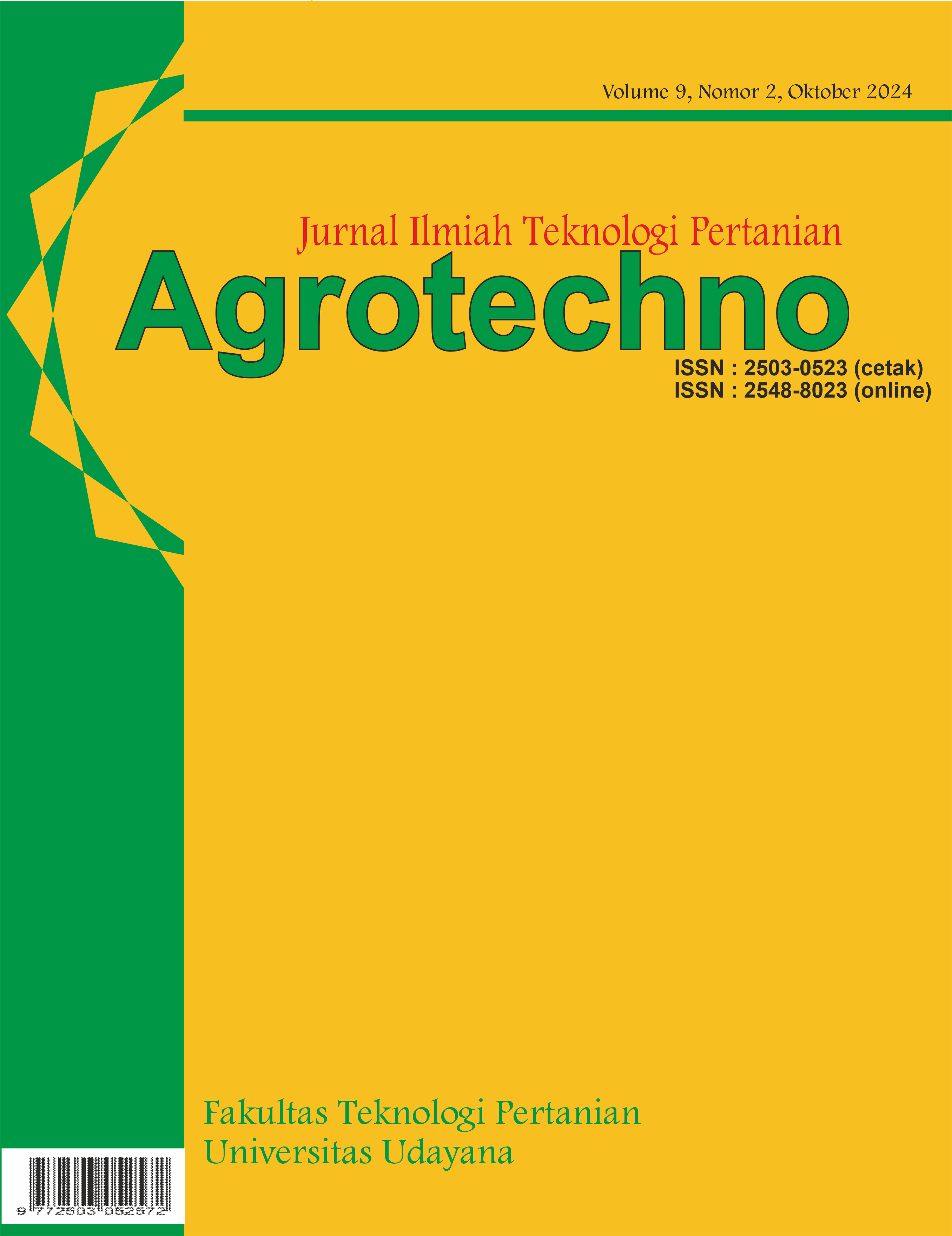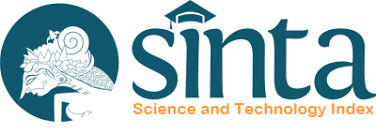Karakteristik Biochar Limbah Bubuk Kopi Produksi UMKM Kopi Tirtoyudo, Malang Selatan
Abstract
The coffee waste which generated from most cafeshop in South Malang is still not optimally utilized, this can be seen from the accumulation of coffee waste around the processing site. This research is an initiation from the research team to provide knowledge and trust to Tirtoyudo Coffee SME stakeholders in increasing the use value of coffee groud waste and circular economy. In general, the aim is to provide information related to the burning quality of coffee powder waste biochar through proximate analysis and socialization related to processing coffee waste into alternative energy, namely biochar. From the research conducted, it resulted in coffee ground waste (SCG) Biochar with a temperature of 500oC having the best composition with a value of 9.33% moisture content, 4.08% ash content, 9.55 pH, and 13.15% C-Organic. This is because coffee has a good composition to restore nutrients and drying is carried out before run-off biochar. This research activity is expected to provide insight and expertise to the community, especially Tirtoyudo Coffee SME stakeholders in South Malang in order to develop biochar renewable energy technology from coffee powder waste (Spent Coffee Ground) into an alternative to using fuel that is more efficient, affordable and environmentally friendly.
Anstrak
Limbah yang dihasilkan dari sebagian besar UMKM kopi di Malang Selatan ini masih belum dimanfaatkan secara optimal, hal ini dapat dilihat dari menumpuknya limbah kopi di sekitar tempat pengolahan. Penelitian ini merupakan inisiasi dari tim peneliti untuk memberikan pengetahuan dan kepercayaan terhadap pelaku UMKM Kopi Tirtoyudo dalam meningkatkan nilai guna Limbah Kopi dan ekonomi sirkular. Secara umum tujuannya memberikan informasi terkait kualitas pembakaran biochar limbah bubuk kopi melalui analisis proksimat dan sosialisai terkait pengolahan limbah kopi menjadi energi alternatif yaitu biochar. Dari penelitian yang dilakukan menghasilkan Biochar Limbah Kopi dengan suhu 500oC memiliki komposisi terbaik dengan nilai kadar air 9,33%, kadar abu 4,08%, pH 9,55, C-Organik 13,15% dan zat terbang 14,55%. Hal ini dikarenakan kopi memiliki komposisi yang baik untuk mengembalikan unsur hara dan dilakukan pengeringan sebelum run-off biochar.Kegiatan penelitian ini diharapkan dapat memberikan wawasan dan keahlian kepada masyarakat khususnya pelaku UMKM Kopi Tirtoyudo di Malang Selatan agar dapat mengembangkan teknologi energi terbarukan biochar dari limbah bubuk kopi (Spent Coffee Ground) menjadi alternatif penggunaan bahan bakar yang lebih efisien, murah dan ramah lingkungan.
Downloads
References
Aghamohammadi, N., Nik Sulaiman, N.M., Aroua, M.Kh. (2011) Combustion characteristics of biomass in South East Asia, Biomass and Bioenergy, 35, 3884-3890. https://doi.org/10.1016/j.biombioe.2011.06.022
Amaral, S. S., de Carvalho Jr, J. A., Costa, M. A. M., Neto, T. G. S., Dellani, R., Leite, L. H. S. (2014) Comparative study for hardwood and softwood forest biomass: chemical characterization, combustion phases and gas and particulate matter emissions, Bioresource Technology, 164, 55-63. https://doi.org/10.1016/j.biortech.2014.04.060
Blinova, L., Sirotiak, M., Bartosova, A., and Soldan, M. 2017. Review: Utilizasion of waste from coffee production. Research Papers Faculty of Materials Science and Technology Slovak University of Technology, 25(40): 91-101. 10.2478/rput-2019-0015
Hartanto, F.J., Alim dan Fathul. 2010. Optimasi Kondisi Operasi Pirolisis Sekam Padi Untuk Menghasilkan Bahan Bakar Briket Bioarang Sebagai Bahan Bakar Alternatif. Jurusan Teknik Kimia. Universitas Diponegoro, Semarang.
Khusna D, Susanto J. 2015. Pemanfaatan limbah padat kopi sebagai bahan bakar alternatif dalam bentuk bricket berbasis biomass (Studi kasus di PT. Santos Jaya Abadi Instant Coffee).
Kiggundu, N. and Sittamukyoto, J. 2019. Pyrolysis of coffee husk for biochar production. Journal of Environmental Protection, 10:1553-1564. https://doi.org/10.4236/jep.2019.1012092
Laviendi, A., Ginting, J. dan Irsal. 2017. Pengaruh Perbandingan Media Tanam Kompos Kulit Biji Kopi dan Pemberian Pupuk NPK (15:15:15) Terhadap Pertumbuhan Bibit Kopi (Coffea arabica L.) di Rumah Kaca. Jurnal Agroteknologi FP USU, 5(1): 72-77. 10.32734/jaet.v5i1.14167
Lehmann, J. dan S. Joseph. 2010. Biochar for Environmental Management. 2nd Ed. Earthscan Pub.Co. London, UK. Hal: 416. https://doi.org/10.4324/9781849770552
Riapanitra, A., and Andreas, R., 2010. Pemanfaatan arang batok kelapa dan tanah humu baturraden unruk menurunkan kada logam krom (Cr). Molekul, 5(2), 66-74. 10.20884/1.jm.2010.5.2.78
Roberts K.G., B.A Gloy, S. Joseph, N.R. Scott dan J. Lehmann. 2010. Life cycle assessment of biochar systems: estimating the energetic, economic, and climate change potential. Environmental Science and Technology. 44: 827–833. 10.1021/es902266r
Salem, T., Refaie, K., Sherif, E., Eid, Mohamed (2019). Biochar application in alkaline soil and its effect on soil and plant. Journal of Acta agriculturae Slovenica 114(1): 85-96. 10.14720/aas.2019.114.1.10
Setyawan, M.N., Wardani, S., and Kusumastuti, E., 2018. Arang kulit kacang tanah teraktivasi h3po4 sebagai absorben ion logam Cu (II) dan diimobilisasi dalam bata beton. Indonesian Journal of Chemical Science, 7(3), pp. 262-269.
Sugiyono. 2019. Metode Penelitian Kuantitatif, Kualitatif dan R&D. Bandung: Alfabeta.
Taufik, I., and Umi, R., 2017. Karakteristik biochar berdasarkan jenis biomassa dan parameter proses pyrolysis. Jurnal Teknik Kimia, 12(1): 28-35. 0.33005/jurnal_tekkim.v12i1.843
Yu, C., Tang, Z., Zeng, L., Chen, C., Gong, B. (2014) Experimental determina-tion of agglomeration tendency in fluidized bed combustion of biomass by measuring slip resistance, Fuel, 128, 14-20. https://doi.org/10.1016/j.fuel.2014.03.002










